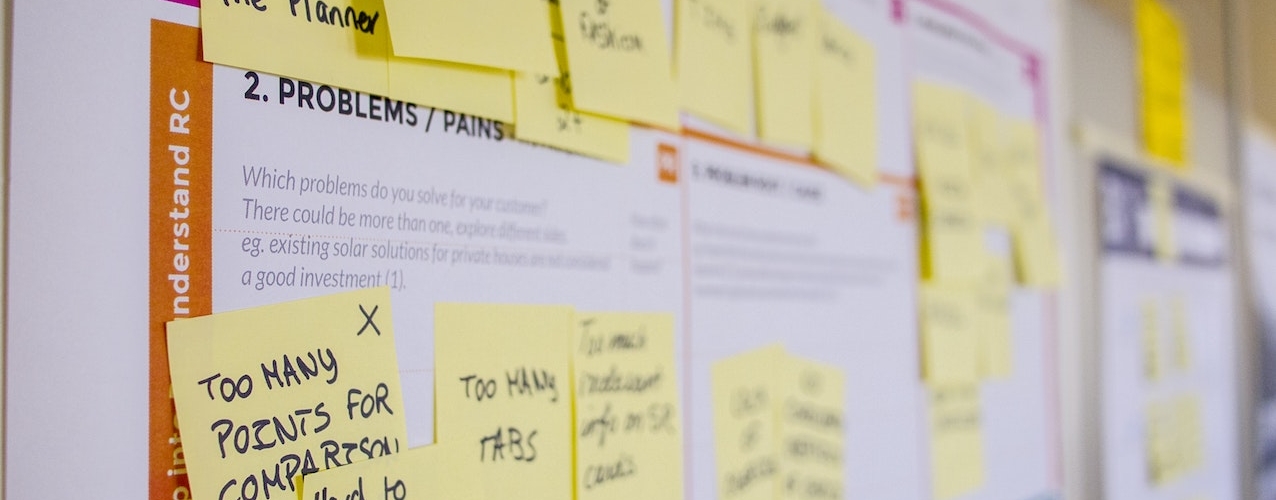Market changes or other issues during product development are inevitable. Whether you discover a bug in the software code, user testing takes longer than you expected, or a rival company poaches your lead developer, an agile product roadmap will help you meet any challenges you encounter during product development.
The term “agile” comes from software development — breaking up projects into small increments of time known as sprints. For example, if you’re building a feature in an app, you’ll likely refer to that on your product roadmap as an “epic.” This is a collection of “stories” or tasks that you need to complete. The “epic” would be the sprint to complete the tasks.
Here are a few tips to help you build an agile roadmap that allows you to meet development challenges head on.
Focus on the goals
When you start building an agile product roadmap, focusing on the goals is paramount. Particularly in software development, where new competition or technology has the potential to change the game midstream, it’s important to lay out what you want to accomplish with your product.
For example, your goals could be to grow your user base, reach a certain number of subscribers, or increase your revenue by a certain percentage. Make sure you include these on the product roadmap and that you tie in no more than three to five features per goal.
Create a strategy
Before you can begin building an agile product roadmap, you need a strategy. The strategy you create, which is how you’ll turn your idea into a product, serves as the basis for the roadmap.
To create a roadmap, you might start with a product vision board that includes the problem you’re solving, your target market, key product features, and business goals. Then take this information and use it to develop epics, stories, themes, and initiatives.
Tell a story
There’s a reason why the elements of a roadmap are called stories, epics, and themes: The roadmap tells the story of an idea that becomes a marketable product. Every story and every epic needs to build on the one before it, culminating in the final product.
As you build agile product roadmaps, keep in mind the audience that will see them. The internal roadmap needs to tell a story that’s compelling to marketing, sales, and management, while the external roadmap should entice customers and partners.
Keep it simple
While it’s tempting to include every last feature on a product roadmap, an agile one needs the flexibility to change as conditions fluctuate. The more complex the roadmap is, the harder it is to shift deadlines or add features.
Ideally, an agile product roadmap focuses on the goals and leaves the details — like designs and scenarios — in the product backlog. Remember, the roadmap is more of a big-picture view that shows how you’ll get to the finished product, not a document chiseled into stone tablets.
Add guideposts
When you’re driving to a new destination, your GPS will tell you when you’re 20 minutes away or if you need to turn left in half a mile. The same goes for your roadmap — it should provide guidance.
Whether they’re general time frames or measurements, such as how many new customers you’re signing up, an agile product roadmap needs various targets. That’s how you’ll know you’re moving in the right direction.
One word of caution: Adding in actual dates may be detrimental to a product roadmap. If you fail to hit those target dates, it may undermine your credibility with external and internal stakeholders. It’s safer to use broader time frames, such as quarters.
Don’t be afraid to say no
Often, you’ll get feature requests that aren’t feasible or are completely unnecessary. You may need to leave those out. Otherwise, there’s no way you’ll be able to create a marketable product. Use the strategy and vision to determine what to include on the roadmap. If it turns out that you can later add a requested feature, an agile product roadmap will scale for that.
Ultimately, using an agile product roadmap can help you stay on course as you develop your product, particularly a software product. If you need to take detours, the roadmap allows for them because you’re working in short sprints. In today’s constantly shifting marketplace, this kind of flexibility is priceless.







































































Send Comment: